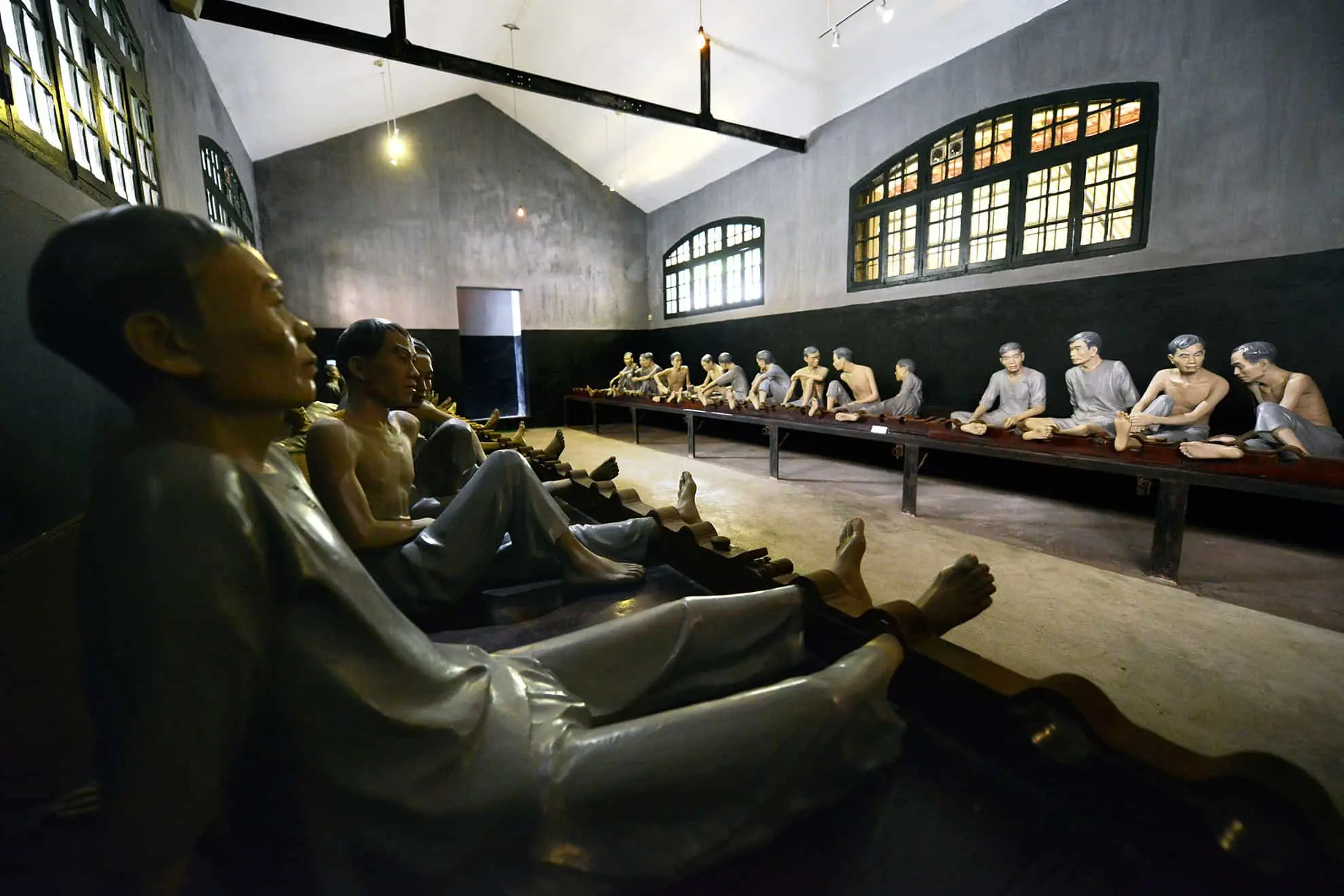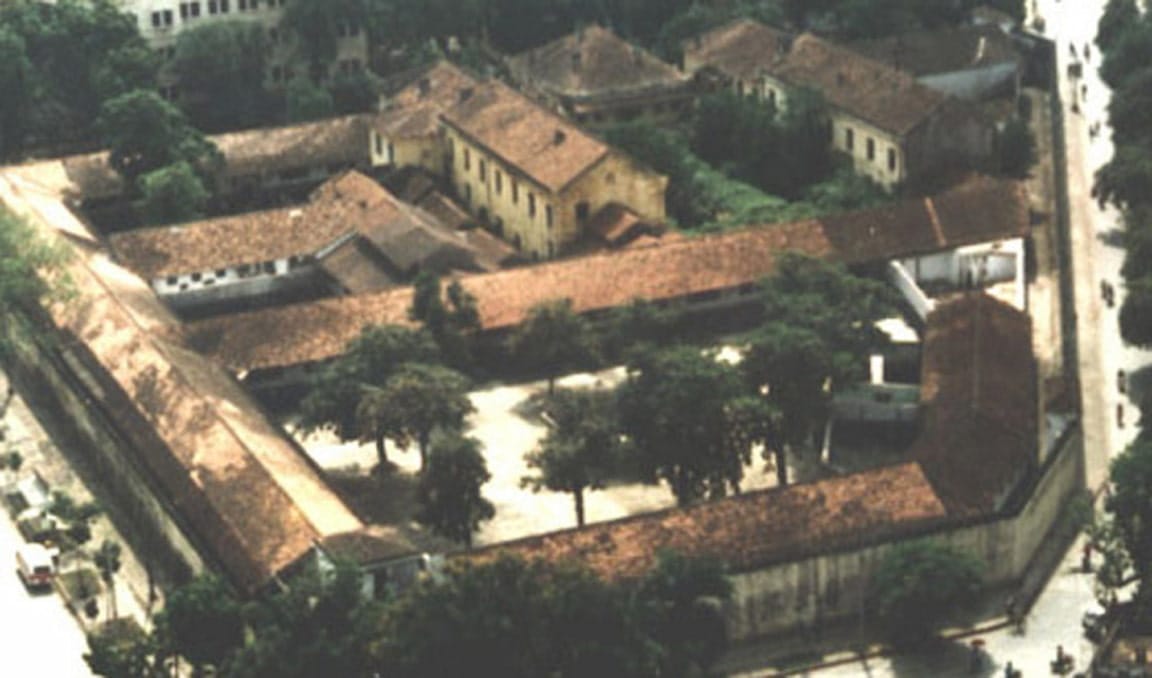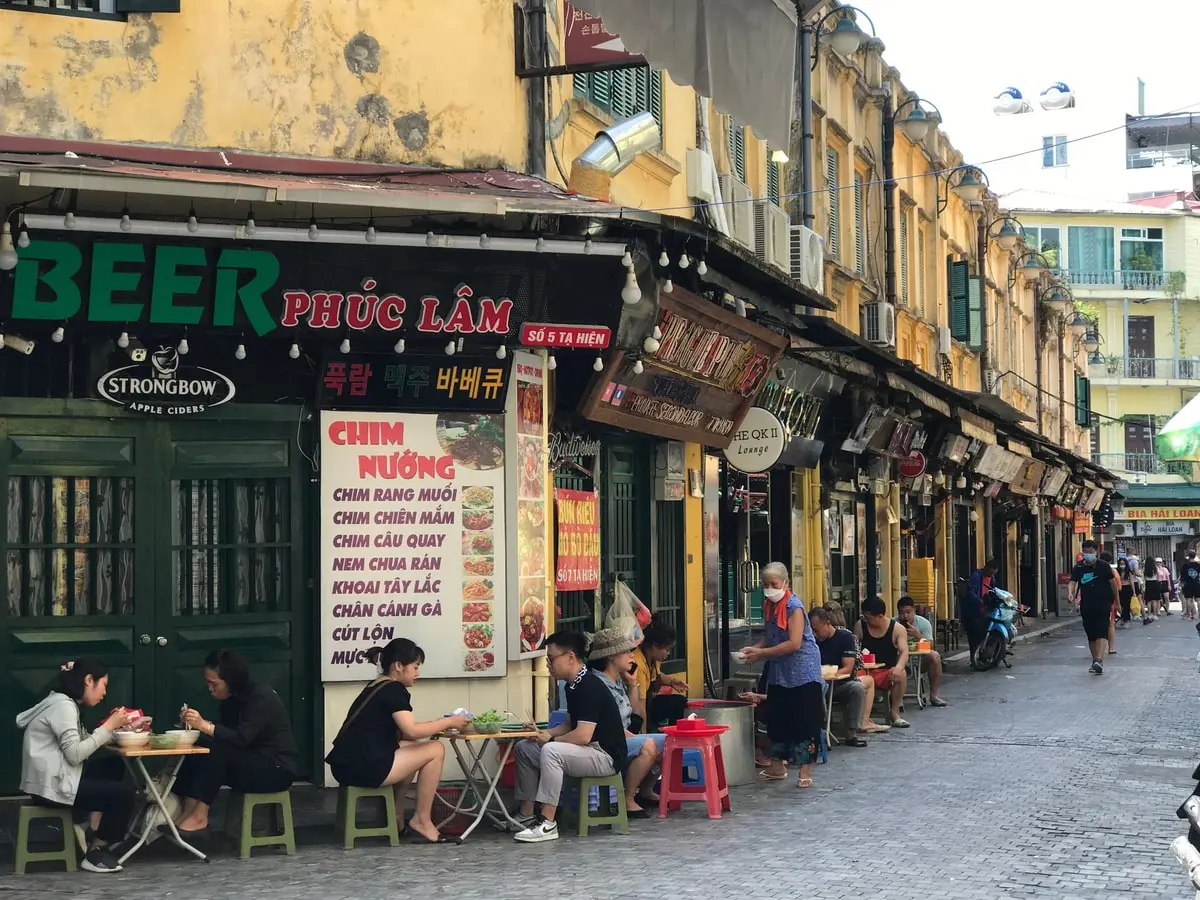The phrase “prison hanoi vietnam” evokes powerful images and a complex history that stretches from colonial occupation to international conflict and modern diplomacy. In the heart of Vietnam’s capital, stone walls contain stories of struggle, survival, and change. These stories are not confined to a single building. They are part of the broader narrative of the city’s development, the country’s fight for independence, and the evolution of the Vietnamese justice system.
EssentialVietNamtravel.com provides this guide to understand the full scope of this topic. We will explore the most famous historical relic, Hoa Lo Prison, and place it within the wider context of Hanoi’s past and present. This article offers a factual, direct look at the history, the human element, and the practical information needed for anyone interested in this significant aspect of Vietnam. The content covers the historical significance of places like Hoa Lo and touches upon the current framework of detention facilities in Vietnam, managed by the Vietnamese Ministry of Public Security. Our goal is to provide a clear, comprehensive resource that respects the history and provides trustworthy information for travelers, students, and historians alike.
Hoa Lo Prison: The Complete Guide to Hanoi’s Infamous “Hanoi Hilton” Historical Relic

Hoa Lo Prison stands as a primary historical destination in Hanoi. Known globally by its nickname, the “Hanoi Hilton,” this site offers a direct window into the turbulent history of Vietnam. For any visitor interested in the subject of incarceration in Hanoi, this museum hanoi vietnam is the essential starting point. The structure itself is a piece of French colonial architecture, a stark reminder of a past era. Understanding this historical relic requires looking at its origins, the key artifacts it holds, and the practical details for planning a visit.
The experience is a journey through different periods of history, each leaving an indelible mark on the stone and iron of the prison. The information presented here is gathered to provide a step-by-step guide for your visit, ensuring you grasp the full weight of its legacy.
From its initial purpose to its current state as a museum, Hoa Lo is a testament to the resilience and complexities of Vietnamese history. It is more than a tourist attraction; it is a place of national memory and a special national historical relic that commands respect and reflection from all who walk its grounds. The transition from a functional prison to a museum represents a significant functional conversion from prison to museum, preserving its story for future generations.
The History of Incarceration at Maison Centrale
The story of Hoa Lo Prison begins with its construction by the French. In 1896, the colonial administration commissioned a French architect to build a central prison, or Maison Centrale, in Hanoi. Its purpose was clear: to serve as a high-security jail for the incarceration of Vietnamese independence fighters and political prisoners. The location, on what was then a street known for selling wood-fired stoves (Hoa Lo), gave the prison its Vietnamese name. This colonial heritage is evident in the thick stone walls, watchtowers, and layout designed for maximum control and punishment.
The prison was a key component of the colonial state power, intended to suppress dissent and enforce French rule. Over the decades, it housed thousands of Vietnamese revolutionaries, many of whom endured brutal conditions. The history of Hoa Lo prison Vietnam is deeply intertwined with the country’s struggle for freedom. It was a place of loss of freedom, where hope and defiance coexisted with despair. The stories from this period form the foundation of the museum’s exhibits today, highlighting the prison’s role in the long fight that eventually led to an independent Vietnam. This chapter of its history established Hoa Lo’s identity long before the Vietnam War.
What to See Inside: From the French Guillotine to the “Hanoi Hilton” Exhibits
A visit to the Hoa Lo Prison relic is a structured experience. Upon entering, you encounter the section dedicated to the French colonial period. Here, you will find dark, communal cells and solitary confinement areas. Life-size models depict the harsh conditions inmates faced. One of the most chilling artifacts from this era is the original guillotine. This machine was used for executions, a stark symbol of the punishment administered by the colonial regime.
This artifact is a central part of the exhibit and a powerful reminder of the prison’s grim past. As you proceed, the narrative shifts to the Vietnam War. This section details the period when the prison was used to hold American pilots shot down over North Vietnam, primarily from the United States Air Force. It was during this time that the American POWs gave it the famous “Hanoi Hilton” nickname.
The exhibits here include photographs, personal effects of the prisoners of war, and displays depicting their daily lives, from interrogations to recreational activities. You can see the flight suit of John Sidney McCain, a famous inmate who later became a prominent U.S. Senator. The museum presents this period as one where, despite the circumstances of war, the prisoners were treated humanely according to the policies of the Vietnamese Government.
Visiting Information: Address (Hoa Lo Street), Hours, and Tickets
Planning your visit to the Hoa Lo Prison relic is straightforward. The official Hoa Lo prison address in Hanoi is 1 Hoa Lo Street, located in the Hoan Kiem district, a central part of the city. Its location makes it easily accessible from many hotels and other major attractions. The Hoa Lo Relic opening hours are consistent throughout the week. The museum is open daily from 8:00 AM to 5:00 PM. It is advisable to allocate at least one to two hours for a thorough visit to absorb the information presented in the exhibits. The ticket price is very affordable. The current cost for an adult ticket is 30,000 VND.
There are often concessions available for students and other groups. Tickets can be purchased directly at the entrance gate. For a more in-depth experience, audio guides are available for rent at a small additional fee. These guides provide detailed commentary in multiple languages and greatly enhance the visit by offering context and stories that are not on the display panels. This is a highly recommended option for any first-time visitor wanting to understand the full history of Hoa Lo prison Vietnam. Following these simple steps will ensure a smooth and informative visit to this important historical destination.
Planning Your Trip to Hanoi?
Now that you know how to visit this historic site, find the best flight deals to begin your journey into Vietnam’s captivating capital.
Check Flight Prices on Kiwi.com
Find Best Flight Deals on WayAway
The Human Stories: From Vietnamese Political Prisoners to American POWs like John McCain

The walls of any prison hold more than just inmates; they contain countless human stories. The history of prison hanoi vietnam is defined by the experiences of the people who were confined within them. At Hoa Lo, these stories span different eras and conflicts, offering a profound look at the human cost of war and political struggle. The narrative is twofold: first, the story of the Vietnamese political prisoner fighting for a nation’s freedom, and second, the story of the foreign prisoner of war caught in a distant conflict.
These personal accounts provide a perspective that historical dates and facts alone cannot. They speak of resilience, suffering, family separation, and the universal desire for freedom. Understanding these experiences is crucial to grasping the full significance of Hoa Lo and its place in history. Famous inmates like John McCain bring international attention, but their stories are part of a much larger tapestry of human experience that includes thousands of lesser-known but equally important Vietnamese figures.
This section explores these personal histories, moving beyond the physical structure of the jail to focus on the inmate and the enduring spirit of those who lived through incarceration here. The legacy of these individuals continues to shape the political and cultural memory associated with this national relic.
The French Colonial Era: A Jail for Vietnam’s Revolutionaries
During the French colonial period, Hoa Lo was a symbol of oppression. It was a detention facility built specifically to break the spirit of the Vietnamese independence movement. Thousands of revolutionaries and suspected dissidents were imprisoned here. For these political prisoners, incarceration was a constant struggle for survival. The conditions were severe, with overcrowding, poor sanitation, and meager food rations. Punishment was common. Despite this, Hoa Lo became an unlikely school for revolution. Within its walls, future leaders of Vietnam organized, educated one another, and planned for a future free from colonial rule.
They developed ways to communicate between cells and maintain morale. Many successful escapes were planned and executed from within Hoa Lo, becoming legendary tales of defiance. The experience forged a generation of leaders who would go on to play pivotal roles in the formation of modern Vietnam. The stories of these individuals are central to the museum’s narrative. They represent the core identity of Hoa Lo as a place where the fight for a free Vietnam was not extinguished but hardened. Their sacrifice is a cornerstone of the nation’s history.
The Vietnam War: The Experience of US Prisoners of War
The identity of Hoa Lo Prison shifted during the Vietnam War. For the world, particularly the United States, it became known as the “Hanoi Hilton,” the primary place of detention for American pilots captured after being shot down. The experience of these American POWs was one of profound isolation and uncertainty. They were thousands of miles from home, in the hands of an enemy nation, and facing an unknown future. The list of prisoners of war included figures like Pete Peterson, who would later return to Vietnam as the first U.S. Ambassador, and John McCain, a Navy pilot whose story of endurance became widely known.
Their daily lives consisted of a routine of meals, interrogations, and periods of solitary confinement or communal living. The museum today displays artifacts from this time, including personal items and the flight suits of captured pilots. The official narrative presented by the Vietnamese Government, both then and in the museum today, emphasizes that the prisoners were treated humanely under a lenient policy. The accounts of the POWs themselves, recorded after their release, often describe a much harsher reality of their incarceration. This divergence in perspective is a key element of the prison’s complex history during the Vietnam War.
Notable Inmates and Their Legacies
The legacy of Hoa Lo is defined by its famous inmates, both Vietnamese and American. On the Vietnamese side, the prison housed five future General Secretaries of the Vietnamese Communist Party, a testament to its role as a crucible for the country’s political leadership. These individuals and many others endured years of hardship but emerged with their revolutionary zeal intact. Their leadership, forged in the harsh environment of the jail, was instrumental in the success of the independence movement. Their stories are a source of national pride and are prominently featured in the historical relic.
On the American side, John Sidney McCain is perhaps the most recognized former inmate. His five and a half years as a prisoner of war, including periods of severe hardship, profoundly shaped his life and political career. His story, and those of other POWs like Pete Peterson, became integral to the post-war dialogue between the United States and Vietnam. The functional conversion from prison to museum allows these legacies to be studied and remembered. The presence of these notable figures in Hoa Lo’s history elevates its status from a mere detention facility to a site of major historical and political importance, central to understanding both the history of Hanoi and the trajectory of US-Vietnam relations.
Explore More of Hanoi
Beyond the Relic: The Modern Prison and Detention Facility System in Hanoi

While Hoa Lo Prison is a historical relic, the topic of “prison hanoi vietnam” also encompasses the current system of incarceration. The modern Vietnamese justice system operates a network of detention facilities throughout the country, including in and around Hanoi. These are active institutions, distinct from historical sites like Hoa Lo. This modern system is administered by the Vietnamese Ministry of Public Security, the government body responsible for law enforcement and corrections.
Understanding this contemporary aspect provides a complete picture, moving from the historical context of a single jail to the broader framework of law and order in Vietnam today. The purpose of the modern prison system, according to official policy, is centered on rehabilitation and preparing inmates for community reintegration. This marks a philosophical shift from the purely punitive function of colonial-era prisons. Examining this system involves looking at its governing bodies, the types of facilities that exist, and the stated goals of inmate rehabilitation.
For anyone conducting academic research or seeking a deeper understanding of criminology or legal systems, this view beyond the museum walls is essential. Information about prison conditions in active facilities can be restricted, but the legal framework provides insight into the official structure.
The Role of the Ministry of Public Security in Vietnam’s Justice System
The Vietnamese Ministry of Public Security is the central managing agency for all prisons, prison camps, and detention centers in the country. This powerful government body oversees the entire corrections system as a component of the broader Vietnamese legal system. Its responsibilities are defined by laws such as the Law on Execution of Criminal Judgments, which outlines the procedures for incarceration, the rights and responsibilities of inmates, and the goals of the correctional process. The ministry is in charge of maintaining security within facilities, managing prison staff, and implementing programs for inmates.
This centralized control ensures a uniform approach to corrections across the nation. The ministry works in conjunction with other parts of the justice system, including the courts, such as the Supreme People’s Court, to carry out sentences. The system is designed to handle everything from temporary detention during an investigation to long-term imprisonment for serious crimes. The role of the Ministry of Public Security is therefore fundamental to understanding how the state power operates in the context of law enforcement and punishment in modern Vietnam.
An Overview of Current Detention Centers (e.g., Hanoi Detention Center No. 1)
In Hanoi today, there are several active detention facilities. These are not tourist destinations but functional parts of the justice system. One example is the Hanoi Detention Center No. 1. This facility, like others, serves as a place for holding individuals awaiting trial or serving shorter sentences. These modern institutions are fundamentally different from the historical Hoa Lo Prison in their design, security protocols, and operational purpose. While Hoa Lo was built to suppress political opposition, modern centers are part of a formal legal process for handling criminal offenses.
A comprehensive list of prisons in Hanoi is typically not made public, and access is restricted. Research into these facilities often relies on official government reports and legal documents. The conditions in Hanoi prisons are a subject of interest for human rights organizations, but verifiable, independent information is often limited. These modern facilities represent the practical application of the state’s judicial power, a stark contrast to the historical narrative preserved at the Hoa Lo relic. They are a reminder that the concept of a prison in Hanoi is both a matter of history and a present-day reality.
The Purpose of a Modern Prison Camp: Rehabilitation vs. Punishment
The stated purpose of the modern Vietnam prison system has evolved significantly from the colonial era. Officially, the primary goal is inmate rehabilitation. The system is designed not just for punishment but to re-educate prisoners and provide them with vocational skills to facilitate their eventual community reintegration. This philosophy is embedded in the legal framework governing corrections. Programs within a modern prison camp may include literacy classes, job training, and political education aimed at fostering a sense of civic responsibility.
The aim is to reduce the recidivism rate by preparing inmates for a productive life after their release. This marks a clear departure from the purely punitive model of the Maison Centrale, where the objective was to break the will of inmates. While the reality of prison life remains challenging, the official emphasis on rehabilitation reflects a modern approach to criminology. The ultimate goal is to balance the need for social order, which necessitates that crime leads to imprisonment, with the humanitarian objective of reforming individuals. The concept of an amnesty, occasionally granted by the government, also plays a role in this system, offering a path to freedom for inmates who have demonstrated reform.
The Prison’s Place in History: From French Colonial Rule to US-Vietnam Relations

The story of prison hanoi vietnam is a critical thread in the larger fabric of the nation’s history and its international relationships. Hoa Lo Prison, in particular, serves as a powerful symbol with multiple layers of meaning. It is, at once, a remnant of French colonial architecture, a monument to Vietnamese revolutionary struggle, a key site in the narrative of the Vietnam War, and now, a bridge in the complex history of US-Vietnam relations. Its journey from a place of conflict to a major touristic destination reflects the profound changes Vietnam has undergone.
This section explores the prison’s wider significance, connecting it to the architectural landscape of Hanoi, its role in diplomacy, and its current status as a cultural and historical cornerstone. Its story is inseparable from the history of Hanoi itself. Understanding its place in these broader contexts reveals how a single location can encapsulate the political and social transformations of a nation. Other historical sites, like the Hang Dau Water Tower or the People’s Public Security Museum, complement this narrative, but Hoa Lo remains unique in its direct connection to multiple eras of conflict and reconciliation.
How French Architecture Shaped Hanoi’s Institutions
The French colonial period left a lasting architectural mark on Hanoi, and Hoa Lo Prison is a prime example of this legacy. The style of the prison—with its imposing walls, watchtowers, and institutional layout—is a classic example of French colonial architecture designed for control. This architectural DNA is shared with other significant buildings from the era, such as the Presidential Palace, the Hanoi Opera House, and the Supreme People’s Court.
These structures were built to project the state power and authority of France. Hoa Lo, however, was designed for a darker purpose: to enforce that authority through punishment and the loss of freedom. Its very design was a political statement. Today, as a historical relic, its architecture serves as a physical reminder of that period of foreign domination. Walking through its corridors, visitors can see how the colonial history shapes prison architecture, with every detail oriented towards security and the suppression of the inmate. This physical environment is a crucial part of the story, setting the stage for the human dramas that unfolded within its walls for nearly a century.
A Symbol of Conflict and a Bridge in Modern US-Vietnam Diplomacy
For decades, Hoa Lo was a symbol of conflict, first with France and later with the United States. During the Vietnam War, the “Hanoi Hilton” was a point of extreme contention, representing the deep divide between the two nations. The stories of American POWs held there fueled political debates and shaped public opinion in the U.S. However, in the years following the war, the prison’s role began to shift. As US-Vietnam relations started to normalize, former prisoners of war became unlikely diplomats.
Pete Peterson, once an inmate within its walls, returned to Vietnam as the first U.S. Ambassador, a powerful symbol of reconciliation. John McCain, another former prisoner, became a leading voice in the U.S. Senate advocating for normalization. In this new context, Hoa Lo transformed from a symbol of war into a site of shared history. It became a place where former adversaries could meet, reflect, and acknowledge the past as a step toward building a new relationship. This evolution is a remarkable chapter in its history, showcasing how a place of incarceration can become a catalyst for peace and understanding between nations.
The Prison in Hanoi’s Cultural and Touristic Landscape
Today, Hoa Lo Prison is one of the most visited sites in Hanoi, a key destination for historical tourism. Its transformation into a museum has cemented its place in the city’s cultural landscape. It stands as a powerful educational tool, offering both Vietnamese citizens and international visitors insight into the country’s turbulent past. As a tourist attraction, it provides a different kind of experience from the city’s temples or lakes. It is a place for somber reflection on the realities of war and the price of freedom. The prison is no longer just a jail; it is a carefully curated historical narrative.
This functional conversion has been successful, drawing thousands who come with an informational or academic search intent. Its story is a core part of the Hanoi tourism experience, offering a deeper understanding of the city’s character. The “Hanoi Hilton” nickname, once a marker of a painful conflict, now serves as a recognizable brand that draws visitors. This unique position—part historical relic, part war memorial, part political symbol—makes Hoa Lo an indispensable part of any journey into the heart of Hanoi’s history.


